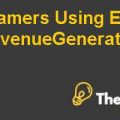
Injuries in Military Training Case Solution
Purpose of the Study
The basic purpose of the study is to find out those factors which are the reasons and causes of injuries occurred during the military training. Furthermore, there are several outcomes of these factors which will be also used in the study to find out the impact of all the given factors on injuries during training.
2 Methodology
In this study the analyst will examine the impact of all the factors which are affecting the outcomes of injuries and the impact of all these variables on the overall training. Moreover, the analyst was asked to choose one of the outcomes and to focus on the specific variable throughout the whole study. Moreover, the analyst used Correlation among all outcomes, analyzed the descriptive statistics, and made the General Logistics Regression Model and finally, the analyst made a Final Logistics Regression Model.
3 Results and Interpretations
It has been discussed earlier that four major techniques were used to analyze the data. Therefore the analyst used Descriptive Statistics of all the outcomes, General Logistics Regression, Final logistic regression and Correlation. The interpretation and results of the techniques has been discussed in the next section.
3.1 Reliability of the Data
The reliability of the data (appendix 6) has been calculated using the Cronbach’s alpha model. However, the reliability of the data has been calculated on all the outcomes to find that the data can be used as a reliable resource or not. Afterwards, the findings suggested that the reliability of the data is around 80% which is exceeding the minimum requirement of 70%.
3.2 Descriptive Statistics
The descriptive Statistics made on all the outcomes of the training and possible injuries which can happen during the 12 weeks session. In addition, the descriptive statistics and all other tables are available in the excel spreadsheet. However, the descriptive statistics are showing the mean, median, mode, standard deviation, skewness, Kutosis and range of all the variables. Moreover, the major focus of the study is towards the outcomes therefore, the outcomes of the study have been interpreted. Afterwards, the findings suggested that Ankle Foot which has also chosen as the Dependent variable in the regression model has a mean of 0.2, while it has a standard deviation of 0.4, kurtosis of 0.23 and skewness of 1.49.
Afterwards, the HPT has a mean of 0.02, standard deviation of 0.14 and skewness of 7.01. In addition, the injured has a mean of 0.35, standard deviation of 0.48 and skewness of 0.65. Moreover, the ITBS has a mean of 0.07 standard deviation of 0.25 and skewness of 2.71. Finally, the knee has a mean of 0.15, standard deviation of 0.36 and skewness of 1.99.
3.3 Correlation
Correlation has been calculated among the outcomes. However, all the outcomes of the injuries are correlated with each other. This means that if an outcome increase the other outcomes will increase or decrease with a specific rate of intensity. Moreover, the correlation among the variable is significant and its showing different level of strengths among them. Furthermore, STRFX has a correlation of 17% with Knee, while it has a positive relation of 30% with overuse, moreover, it is showing a positive relation with acute and its 3% afterwards, it has no such relation with ITBS, on the other hand, it has a 27% of positive relation with Injured moreover, it has a very weak relation of 3% with HPT and finally, it has a positive relation of 20% with Ankle Foot..................
This is just a sample partial case solution. Please place the order on the website to order your own originally done case solution












